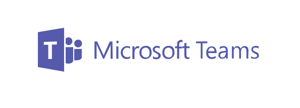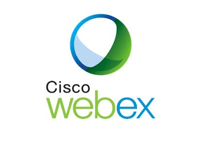Thanks to video conferencing tools, organizations have been able to maintain at least some form of continuity throughout the global pandemic that has re-shaped the business world. With the inability to conduct face-to-face meetings, video conferencing software has created simulations that enable disparate team members, colleagues, clients and business partners to come together. In fact, video and web conferencing tools like Cisco WebEx Meetings, Skype for Business, Microsoft Teams, Google Meet, Google Hangouts, Zoom and so many others have made it possible to share news, files and insights and much more.
It's expected that the web conferencing market will explode within the next few years, with predictions of reaching $50 billion by 2026.

Source: Global Market Insights
In this guide, we'll look at some of the best video conferencing software offerings and examine their features, pros and cons, ease of use and popularity as collaboration tools.
Remote working is here to stay
Even before COVID-19 started its rampage, the demand for flexibility in where and how people work had been building for years. Before the crisis, surveys showed that 80% of employees want to work remotely at least some of the time, and over one third would take a pay cut in exchange for the option to do so.
"Our best estimate is that 25-30% of the workforce will be working-from-home multiple days a week by the end of 2021."
Kate Lister, President of Global Workplace Analytics
The benefits of remote working
The benefits of remote working, made possible through the implementation of web conferencing solutions, apply to both employers and employees.
Reduced real estate costs
With many employees and executives not at at their desks of a great percentage of time, it makes sense for businesses to adopt a remote working culture to save on the costs associated with physical office space
Reduced absenteeism
Employees who can work from home can overcome personal obstacles like childcare issues or commuting difficulties, yet still work close to normal hours.
Increased productivity
Employees tend to feel less anxious about early starts, late finishes and long commutes, so this reduces stress. With fewer interruptions in their working day, and reduced travel costs, motivation is increased and with happier employees, their productivity greatly increases.
Why do businesses need video conferencing solutions?
Today's state-of-the-art video conferencing systems provide much more than any last generation web conferencing solution. With file sharing, screen sharing, whiteboard presentations, instant messaging, separate breakout rooms, enhanced privacy settings and much more, video meetings in real time have made business continuity possible.

Source: TCI Technologies
Most online meeting software is relatively easy to use, and with the proper training, team members can have access to audio and video calls as if they were actually in a face-to-face meeting - without the need for constant travel.
Benefits of video conferencing
For modern businesses to grow and innovate globally, it's essential to maintain quality relationships with suppliers, partners, internal teams, investors and clients. The biggest advantage of video conferencing is the ability to achieve and build on these relationships through the power of video communication and collaboration.
Video conferencing enables the digital workforce
Video conferencing software allows teams to maintain human connections through an online meeting, irrespective of physical location. This in turn can make a huge difference to an organization's decision making process, and greatly improve the ability of teams to collaborate globally.
The most productive meetings result when technology and good meeting habits come together. When teams can control their environment, the communication between attendees is greatly enhanced, and in most cases, this reduces the time to complete projects. Instead of the complex logistics of organizing in-person conferences with attendees from all over the globe, video conferencing software allows businesses to put all attendees on the same page (or screen) virtually for free, with little to no complicated administration.
Ease of Management
The availability of cloud-based video conferencing software is a big game-changer for IT teams and execs. Moving an organization's UC infrastructure into the cloud eliminates the burden of maintaining and optimizing on-prem video conferencing equipment. Accessing a communications network today can be as simple as logging in to a web-based admin console, setting preferences and accessing usage reporting.
Creating a video-first communication culture
The new age workforce is all about teams, mobility, flexibility and modern technology to address their communication needs. Coming together through video collaboration and online meetings is the new norm, while private offices and seclusion is becoming a thing of the past. Video conferencing software allows users to communicate with nonverbal inflections and gestures. It removes the uncertainties in communication and creates richer, more human interactions by allowing everyone a voice and a face at the table, even when connecting from the other side of the world.
Need to improve the performance of Unified Communications within your business?
What do businesses look for in a video conferencing platform?
Most of the top video conferencing software options are capable of providing high-quality video with collaboration tools. Essentially, however, every conferencing solution has its upsides and downsides, and what might suit one business may not suit another. So it's really up to organizations to talk to their IT teams, service providers, CIOs and even employees to gain the feedback about which tools to use.
With remote work creating disparate devices and scattered locations, there may even be several conferencing solutions being used within an organization. This highlights the importance of third party monitoring and performance management tools within every UC environment.
The following sets out the 10 most important features that businesses look for in a video conferencing platform, along with cost considerations.
Users
Platform users are also known as hosts. These are the people on your account who organize meetings. Billing depends on the plan you use, will be billed per the number of users you have. For example Zoom pricing at enterprise level costs $19.99 per host per month.
Meeting participants
Some businesses may only need to connect with a small number of people. Zoom's free web conferencing version for example, allows hosting of up to 100 participants, but they offer unlimited plans, advanced features and add-ons allowing up to 1,000 participants.
Meeting duration
You'll need to consider how many meetings you'll be conducting per month, and how long a typical meeting will last. For example, GoToMeeting's $14/month starter plan offers unlimited meetings with no time limits, but only allows a maximum of 10 participants. Zoom's free plan on the other hand, offers unlimited monthly meetings, but with a 40 minute cap time on each meeting.
Group collaboration
Today’s video conferencing software goes above and beyond just facilitating meetings. Most of the top platforms on the market offer versions of the following features:
- Whiteboarding capabilities allow participants to share content and make notes in real-time for maximum engagement.
- App integrations allow the import of presentations from third party programs
- Screen sharing engages participants by enabling the sharing of documents and presentations
- Group messaging allows you to send files and text instantly
Video and audio recording
Recording capabilities allow participants to save full meetings, or sections of meetings as reference or sharing points for those who may not have been able to attend. You'll have the option to save files locally, or in the cloud if the platform offers cloud storage.
Compatibility
Some businesses have a workforce that is mostly mobile, using laptops and desktop devices equipped with microphones and webcams, there are plenty of web conferencing solutions to choose from. However, if your business uses dedicated equipment or more traditional conferencing technologies, your communication platform will either need to integrate, or you may have to upgrade your equipment.
Usability
Your web conferencing platform needs to be easy to use for both your meeting hosts and participants, with minimal time devoted to dedicated training. A simple, intuitive user interface will prevent delays and navigation issues, so you can conduct your meetings as efficiently as possible.
User support
The quality of customer service you receive can be a huge consideration for businesses with any video conferencing platform. Video conferencing providers offer various different levels of customer support, so it's important to make sure you check on the service details for every platform and plan level your business needs.
Mobile adaptability
If your employees and teams are always on the go, you may need to look into services that enable you to host meetings from a smartphone or tablet. In today's remote working culture, there are plenty of platforms with mobile apps that make it easy to start or join a meeting, and even allow features like screen sharing and instant messaging.
Pricing considerations
All of the features listed above will affect the pricing structure of your chosen video conferencing solution. Most video conferencing is subscription based, with choices of paying annually or monthly. Many platforms offer a free plan, or trial free offers. Before deciding on what platform to use, it may be a good idea to take advantage of any free offers before committing to a paid plan, although in the long term, free versions are usually only suitable for small businesses.
The 4 most popular video conferencing platforms
As video conferencing continues to evolve into a business-critical tool, it's important to prioritize enterprise-level service reliability, intuitive features and support reliability. Let's look at some of the most popular video conferencing tools and the different reasons for their popularity, as compiled and reviewed by Business News Daily.
Zoom

Reviewed as 'best overall', Zoom's most attractive features include its intuitive ease of use, flawless video, crystal clear audio and instant sharing capabilities that make it a favorite option for video meetings. You can look at some of the most impressive features here.
Microsoft Teams

Reviewed as 'best for integration', Teams video conferencing software is designed for seamless efficiency, integration and collaboration, which makes it a favorite with businesses who already utilize Office applications like Word and SharePoint. Take a look at Teams features here.
GoToMeeting

Reviewed as 'best for smaller businesses', even though GoToMeeting is no longer the most dominant video conferencing tool, it remains a favorite with users due to its list of features including its polling and “raise a hand” features. More detailed features here.
Cisco Webex

Reviewed as 'best for cloud collaboration, Cisco Webex remains popular for online training, webinars and remote support. In particular, it’s excellent for businesses that have legitimate security concerns, with its Transport Layer Security (TLS), third-party accreditations, encryption, firewall compatibility, single sign-on and secure scheduling options. Find out more here.
Monitoring and performance management is critical
Unified communications and collaboration platforms like the ones in this guide form the basis of some of the most essential business systems. As the modern workforce becomes more remote, and the demand for a seamless experience increases, the need for high up-time and fast problem resolution has never been more critical, as it all affects an organization's bottom line.
Multi-vendor, multi-solution is the way forward
Most organizations today use more than one unified communications platform, choosing disparate platforms from any number of UC vendors including Cisco, Avaya, Genesys, Microsoft, and others.
According to Wainhouse Research, more than 75% of IT leaders would choose to implement a range of best-of-breed solutions from a variety of vendors to meet their UC requirements, all made possible by the use of cloud services.
IR Collaborate offers enterprise grade performance management across voice, video and collaboration ecosystems. Whether your environment is on-premises, in the cloud, or hybrid, with IR Collaborate you can simplify complex unified communications environments and ensure the lines of communication are always open.






